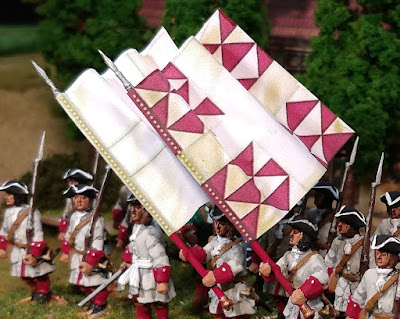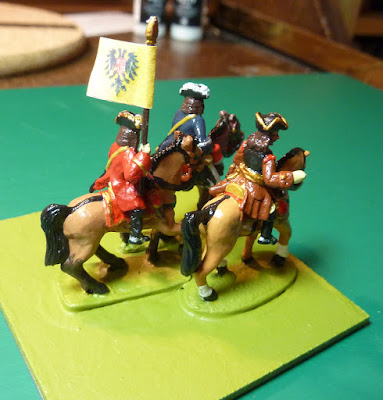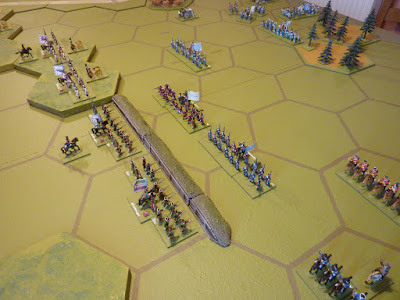This tale is based upon a single - and
unexplained - entry in the Accounts and
Proceedings of the Council of the Town and Parish of Lancaster, in the County
of Lancashire, dated 17th November 1621. The entry is signed by the Clerk
of the Council, one Jeremiah Archibald.
The Accounts
contain no subsequent reference to the matter. Neither the strangers referred
to nor Mr Joseph Smallbone were ever found, as far as we know.
The room was hot, and very noisy - a fire burned in the hearth, and everyone seemed to be speaking at once. The
Clerk of the Council rose to his feet and shouted for order.
"If it please the Council - my Lords,
gentlemen, they are bringing in Mistress Farr now..."
And Jean Farr duly appeared - she was
rather frail, and her shoulders trembled slightly as she was led to a chair
opposite Sir Thomas.
"Mistress Farr," said the Clerk,
"this is Sir Thomas Fanshawe, who is Member of the Parliament for this town,
and who chairs today's Council meeting. Gentlemen, my Lords, Mistress Farr is cook
and housekeeper for the Reverend Musgrave."
Old Jean said something, but it was
inaudible in the general din. Sir Thomas, removing his hat, rose to his
feet and bowed slightly, and raised his hand for quiet.
"Granny Farr," he said, "I
know you well - you and your late husband worked at the home of my father, and
I know you to be of good character. I trust and hope that the Good God has
granted you health and strength? I need you to help us resolve this odd
business about these strangers - it has certainly become the currency of every
market stall and alehouse in the town, and the tale becomes more unholy by the
minute. Since you are the only person who seems to have met and spoken to them,
I shall be very pleased if you will tell me what happened - we need to know who
these people are, how they got here, without any knowledge of the Town Guard,
and where they have gone. Firstly, if you will, do you know why they chose the
Reverend Musgrave's house to call upon?"
The noise had now diminished to the point
where Jean's voice was audible - it wavered a little, but was quite strong and
clear.
"My Lord, if it please you, they said
they knew the Minister's home, being a large building, must be the dwelling
of an important person. I told them that Mr Musgrave was gone on business to West
Derby, but they gave me a gift for him and made a short address - their accents were
strange, but I could understand most of what they said."
"And what did they say, Granny? - what
do you remember about them?"
"They arrived in some sort of carriage
- I did not see them approaching, until they knocked at the kitchen door."
"Pray tell us of this carriage - how
many wheels? - how many horses?"
"Neither horses nor wheels, My Lord,
it was black, and square, and it shone like glass - about the size of a small
coach, but without windows or fastenings - I did not see it closely, but I knew
it was strange. Unfamiliar."
"Please go on, Granny - what about the
visitors themselves?"
"They looked very peculiar, My Lord -
I told the Constable all this..."
"Yes, yes, Granny, I have the
Constable's account here - I need you to tell me what you saw, so that I may better
understand this mystery."
"There were two of them, My Lord -
they were tall, they were men, I believe, though their clothes were peculiar -
they had pantaloons which reached to their feet, they wore no coats or cloaks,
they were without beards, their heads were bald - shaved, I think - and they
had pictures and patterns painted on their skin."
"Pictures? Religious images?"
"Nay, My Lord, they seemed to be some
form of decoration - flowers and artistic forms."
"Hmm - and why did they say they had
come?"
"They seemed to be upset, they were
arguing with each other all the time - they asked me twice what was the date,
and they said the year was wrong, though I am certain I told them the truth.
They said they had come from not far away, but from a long way in a different
age - from the future, they said, though I know not what they meant."
The background chatter sprang up once more,
but Sir Thomas silenced it with a glare.
"Please go on, Granny..."
"They gave me a box, which they said
was a gift from our descendants - it would help us rid ourselves of the plague,
they said."
"The box is before you on the table,
My Lord," interjected the Clerk.
The box was about the size of a man's head
- without any markings. Sir Thomas lifted a flap and put his hand inside, and
removed a number of shiny, cylindrical beads with rounded ends - all
identical, each about the length of his thumbnail, with one end coloured yellow
and the other crimson. He looked at a few of them, in the palm of his hand, and
rolled them onto the tabletop.
"There must be many thousands of these
in here," he said. "Do we know what they are?"
The Constable, Simon Chaffell, rose to his
feet.
"If it please your Lordship, as yet we
do not know. They do not seem to be any kind of explosive device."
"Thank you, Master Chaffell,"
said Sir Thomas, "I shall come to you in a moment, if you will - in the
meantime, let me resume my questions of Mistress Farr. Granny, please tell us
what happened next?"
"Well, My Lord, I was going to prepare
for them some bread and meat, and a little ale, after their journey, but they
began to shout loudly, and they ran out into the kitchen garden, and
up the hill towards the Mercat - they were very upset because their coach had
gone without them..."
Sir Thomas gestured towards the Constable.
"Chaffell, can you tell us what
happened?"
"Well, Sir Thomas, the Widow Lalsworth
was watching from her window opposite, and she saw two youths playing around
the coach - Young Joseph Smallbone and his friend, the Fool Michael."
"The Fool Michael?"
"Yes, Sire, a simpleton who lives down
at the Barnlands near the Nether Gate - he spends much of his time with
Smallbone, who is a thief and a prankster, who does not work and never attends
the church..."
"I understand - please go on - what
did Mistress Lalsworth see?"
"She said that she saw Smallbone
interfering with the coach - he climbed upon it, and went inside it. Then there
was a strange sound - like music, the Widow says - and the coach disappeared.
Then the strangers came out of Mr Musgrave's garden, shouting, and chased the
Fool up the hill towards the Mercat Cross. We have searched for them since two
days now, and alerted all the watch, but no sign has been found. We have
examined the place where the coach stopped - there are no tracks of wheels or
animals - there are only three round depressions in the earth where it rested. Otherwise the ground is undisturbed."
"Thank you, Chaffell - I am concerned
that these strangers, in such an unusual vehicle, could have entered though the
gates of the town without being seen - I trust that they will be apprehended if
they attempt to leave. I understand that there has been no sign of Smallbone,
either? We must keep this "gift" in a secure place, in case they
return, and perhaps we might examine some of these beads more closely. I would
really like to know what these things are. Do you have any ideas,
Constable?"
"None, My Lord - perhaps they are some
kind of religious offering, or gems of some kind? I know that Mistress Farr has
some thoughts about this."
At an enquiring glance from Sir Thomas, Old
Jean spoke up.
"I know this is without sense, My
Lord, but I think they may be some kind of money."
"Money? - they do not look like any
kind of money I have seen, Granny."
"Yes, My Lord, but the strangers told
me that these beads are called Penny-Shillings in their country, and are highly
prized."

































